EXAMPLES OF APPLICATION
This system is incredibly easy to implement and use, but it does require the GM to make a few up-front choices about what he wants in the way of help. No resolution system to my knowledge uses exactly eight dice for action resolution – and even if they do a GM will easily find himself getting continually confused about which die represents which quality (“Green… green is… err… ahhh…”) which removes the whole advantage of having the system in place. So the question becomes which qualities the GM thinks will serve his campaign best, and will help him the most.
To help towards that end, I thought I’d include a few examples of putting the system into effect using existing systems on the market.
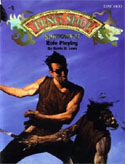 FENG SHUI: Feng Shui, the game of Hong Kong Action moviesoriginally published by the apparently defunct Daedalus Games (and now available from Atlas Games), uses a resolution mechanic of rolling 2d6 – one positive, one negative – to get an action total. A GM decides that the two most appropriate qualities for this type of game would be Style and Luck and he assigns one to each die. He further decides that due to the peculiarity of the system he’ll let his players choose which die (positive or negative) will represent Style and Luck before each roll.
FENG SHUI: Feng Shui, the game of Hong Kong Action moviesoriginally published by the apparently defunct Daedalus Games (and now available from Atlas Games), uses a resolution mechanic of rolling 2d6 – one positive, one negative – to get an action total. A GM decides that the two most appropriate qualities for this type of game would be Style and Luck and he assigns one to each die. He further decides that due to the peculiarity of the system he’ll let his players choose which die (positive or negative) will represent Style and Luck before each roll.
Marcia, a Karate Cop, has her back against a wall in an underground garage as some big bruiser blasts holes out of the concrete from around the corner. She decides the concrete’s taken enough punishment for her sake, and tries to roll out from behind her cover and plant a few big holes in the guy taking potshots at her. She easily succeeds, with a low roll on Luck (which she chose to put on her negative die) and a high roll on Style (which she chose to put on her positive die). Rolling out from behind her cover perfectly she catches the muscle-bound clod completely unawares as her .45 takes out some important sections of his chest, “twirling the gun around her finger as she pulls off each shot”.
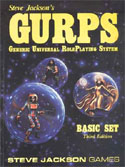 GURPS: A GM designing a fantasy campaign decides to use GURPS from Steve Jackson Games with its 3d6 resolution mechanic as his game system of choice. Knowing his own weaknesses in description (he usually found himself focusing on how skilled the action was and little else) he decides to emphasize some other areas, choosing the qualities of Time Required, Outside Influences, and Knowledge for his three dice.
GURPS: A GM designing a fantasy campaign decides to use GURPS from Steve Jackson Games with its 3d6 resolution mechanic as his game system of choice. Knowing his own weaknesses in description (he usually found himself focusing on how skilled the action was and little else) he decides to emphasize some other areas, choosing the qualities of Time Required, Outside Influences, and Knowledge for his three dice.
Dreyldor, a lithe female elf with a body to kill for, decides to try seducing the king for her own sinister purposes while the Queen is out of town. She fails, rolling high on her Knowledge die, but low on her Time Required and Outside Influences dice. “You’ve worked on kings before and know exactly what a man like this is feeling,” the GM says, “But it simply takes you too much time. On the day before the Queen is to return he lets you steal a kiss, but nothing more, and once she returns you have no hope of succeeding.”
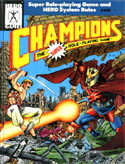 CHAMPIONS: Champions, the premiere game of superhero roleplaying, uses a 3d6 mechanic. A GM running this system decides that he’ll choose the qualities of Power, Finesse, and Style because he feels the combination will bring about good descriptions for a superhero campaign.
CHAMPIONS: Champions, the premiere game of superhero roleplaying, uses a 3d6 mechanic. A GM running this system decides that he’ll choose the qualities of Power, Finesse, and Style because he feels the combination will bring about good descriptions for a superhero campaign.
An asteroid is flying towards a doomed Earth. Chuck decides he wants his character, the Living Reactor, to stop it by flying up and pushing it out of the way. He rolls a mediocre Style die, a poor Power die, and a great Finesse die – succeeding. The GM smiles, “The Living Reactor launches himself into space and straight towards the asteroid, but the asteroid’s mass is just too much and it continues on inexorably. You think for a moment and then remember something about vector mathematics from high school physics – you were studying it just before your homemade reactor blew up in your basement, giving you amazing powers beyond the ken of mortal man, but I digress . . . You’re not able to stop the meteor, but you are able to alter its course so that it will harmlessly pass by the Earth.”
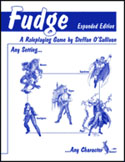 FUDGE: FUDGE, the Freeform Universal Do-it-yourself Game Engine, designed by Steffan O’Sullivan and published by Grey Ghost Games, uses an interesting mechanic of 4dF (“F” for Fudge Dice) which is functionally equivalent to 4d3-8. One GM using the system for science fiction decides to take advantage of this large number of dice to have a more holistic selection of qualities – Outside Influences, Skill, Knowledge, and Luck.
FUDGE: FUDGE, the Freeform Universal Do-it-yourself Game Engine, designed by Steffan O’Sullivan and published by Grey Ghost Games, uses an interesting mechanic of 4dF (“F” for Fudge Dice) which is functionally equivalent to 4d3-8. One GM using the system for science fiction decides to take advantage of this large number of dice to have a more holistic selection of qualities – Outside Influences, Skill, Knowledge, and Luck.
Rawthlar, a ferocious cat-creature from the planet of Purrtend, whips out his blaster and tries to blow a few holes in an offensive Lizardman from the planet Hisstery as the ship they’re in begins to fall apart. He fails despite his decent rolls on the skill and knowledge dice due to a poor showing on his luck and outside influences dice. The GM describes his attempts as such: “Rawthlar, although being one of the better shots this side of the Andromeda Cluster, has the unfortunate luck to be standing on a deckplate as it suddenly lurches to one side. Your shot goes wild and the Lizardman hisses in grim pleasure.”
Later, after dispatching of the Lizardman through other means, Rawthlar commandeers a shuttle and is now attempting to pilot it out of the shuttlebay before the spaceship blows itself to pieces. The GM requests a roll against his piloting skill and gets back a success with great results on the luck die and the skill die. “As the shuttle lifts slowly off the pad the support beams of the shuttlebay begin to collapse. You bring the engines on-line in a horrible, mechanical growl and the shuttle speeds forward. Doing an amazing roll to avoid being crushed by one of the heavy beams you bring the shuttle out through the bay doors just as the bay collapses behind you. Seconds later a horrendous explosion consumes the remnants of the dying ship. You made it out just in time.”
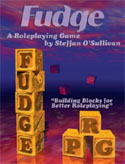 FUDGE HORROR: Another GM using FUDGE for horror decides he doesn’t want to juggle that many qualities, so he only uses two – style and skill – assigning two dice to each.
FUDGE HORROR: Another GM using FUDGE for horror decides he doesn’t want to juggle that many qualities, so he only uses two – style and skill – assigning two dice to each.
Benedict, a Catholic priest with an edge, has been cornered by undead hordes in the basement of the old mansion. His player, Joe, decides that escape is now the better part of valor and says, “Benedict pushes over the stack of dusty crates into the path of the zombies, simultaneously dropping a grenade at his feet, smashing the sunken window behind him and crawling out as quickly possible.” The GM rolls his eyes, “Only trying three things at once tonight, Joe? Sure you wouldn’t like to try three dozen? Roll against your Dex, plus triple action penalties for the round.” Much to the GM’s discomfort Joe is as lucky tonight with the dice as always, rolling his two style dice exceptionally well, one of his skill dice fairly well and the other with average results. “Not bad, huh?” Joe chuckles. The GM rolls his eyes, “As the zombies close in, dripping ichor, Benedict drops to a crouch, performs a perfect spin-kick on the stack of boxes, knocking them into the first line of zombies who promptly fall over. Without a second glance he finishes the spin, simultaneously loosening one of the grenades on his belt, removing the pin, and letting it drop. No sooner has it hit the ground then he springs up through the window, smashing it, and coming out on the grassy lawn in a perfectly committed somersault. Coming to his feet and into a run he easily gives himself plenty of distance before the basement becomes a raging inferno behind him.”












Generally, if the system is to be more complex, I prefer it to be more complex because the player has more choice. This seems to add complexity to assist the DM’s imagination.
While that is an interesting sort of thing to do behind the scenes, as in generating forces that roam an area and may interact with characters during a game, it is hard for me to see this proposed system not slowing things down when dice are tossed (when DM response needs to be fastest.)
I think players want to affect the action by continuing to act, rather than getting better descriptions of what they did. Speed with a little flavor may be better for their amusement than a lot of flavor at the expense of speed.
That’s not a complaint, as you are clear this is an optional system. There are probably a lot of people that would find it helpful.
On the meta level, I’m wondering how you generated the examples. Did you pull the whole thing off the top of your head, or did you invent a situation, roll dice, and challenge yourself to describe the outcome as they lay?
@Andrew: The desirability of flavor text entirely depends on the play style of the group, but I don’t think using this would necessarily slow the DM down. It adds no dice rolls, and as soon as you’ve gotten accustomed to your personal color code, you can just eyeball the dice as you give however much description you’d normally give. The idea here, as I understand it, is to give you a way to break out of a pattern of always describing things in a certain way, particularly using “degree of success” as a crutch.
@Confanity: It’s been 12 years, but IIRC I think it was a little of both. I rolled some actual samples and crafted others to highlight the variety of the system.
I understand the purpose of helping the DM add creativity to descriptions and weight or flavor to interpretation of the outcome. I also admit is possible I misunderstand the system. And, I certainly don’t mean to argue whether the system should be used or not; as you say, it’s a matter of taste. I only respond out of my thoughts as I have reflected on the possible advantages and disadvantages, because I think about what you post.
There is an interesting tension between how the base numbers are built and what the dice represent. Most systems have the base numbers built out of a combination of physical or mental description, level of training, and kind of equipment. Then the dice add the element of chance.
As I understand it, a proportion of the base number is (for example) skill, and the randomizing for description could also represent (for example) skill. You have a contributor to the base number that is from physical ability, and possibly a descriptive die representing physical ability.
You could certainly end with a situation where a creature with -2 to accuracy from Dexterity (to use a DnD example) could hit with great finesse–the penalty was still calculated into the base, but the source of the penalty was what carried the day. Great Dexterity caused success, even though it was still adding a -2 adjustment.
I think this approach suggests that your base number is like a salad, and when you stick your fork in you might get a carrot, or lettuce, or a tomato, or a bit of cheese; all are present, so which one is the focus in this action?
I realize this is overthinking a descriptive veneer. Still, we play with these ideas so they can lead us to other ideas, right? Anyway, thanks for sharing.
@Confanity: You mention the DM working out the personal color code. The difficult element I see there is that (as I understand the system proposal) the dice could change from character to character, from trait to trait, and between activity types. That’s trying to fix your eye on a kaleidoscopic shifting randomization; you don’t have a “skill die” and a “technique die” but instead what the dice represents changes constantly. Unless you don’t want it to, in which case that’s focusing on one element of the broad proposal.
One thought that occurs to me is that if you’re using a single die system (like D&D), the Narrator could roll a couple of d8s just to decide what qualities end up being relevant to this specific action.
So for example, imagine that paladin Arthur Grace is making an attack roll against an orcish warrior with his sword. He rolls a success and enough damage to take down the orc. The GM privately rolls two d8s and gets a 7 and a 2, which corresponds to Outside Influence and Power. “Arthur brings his sword around in a massive overhead chop. The orc brings up its sword to parry, but as the two blades meet the orc’s poorly maintained blade snaps off at the base and Arthur’s strike continues to split the orc’s skull in two.”